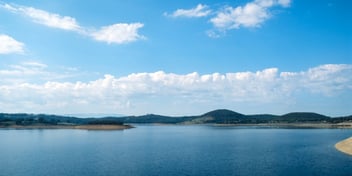Finding the sweet spot for water management in the Lower Burdekin
Since the first small paddock of sugar cane was planted on the Burdekin flood plain in 1875, the area just south of Townsville has grown to become the largest sugar producing region in the country. But its long-term sustainability will depend on changes to the way water is managed.
The Lower Burdekin’s cane industry, which is spread across 80,000 ha and worth about $420 million in sugar exports per year, relies on an extensive irrigation system.
North of the Burdekin River, water for irrigation is supplied by Sunwater through the Burdekin Haughton water supply scheme, which includes supply from the Burdekin Falls Dam.
To the south, Lower Burdekin Water (LBW) delivers irrigation water from the largest replenished coastal aquifer in the country via underground bores.
Across the LBW region, water is distributed through a complex network of weirs, balancing storages, water recycling pits, pump stations, channels, waterways, lagoons and groundwater recharge pits.
“The Lower Burdekin is a fascinating environment to work in, in terms of water, agriculture and the environment all needing attention,” CSIRO Senior Principal Research Scientist Dr Keith Bristow said.
“It’s been very successful from an economic point of view, but in terms of long-term sustainability we’re going to have to spend some money to keep that in line with the environment.”
Bristow, who will be speaking at the Australian Water Association’s North Queensland Regional Conference next month, has lived and worked in Townsville since 1983, and has seen conditions in the Lower Burdekin change over the past 30 years.
He said while trees would have once helped to manage the water table, the region’s long history of irrigation has led to issues with salinisation that could threaten the Lower Burdekin’s productivity.
A rising water table is the problem north of the river, where over-irrigation can cause salinity to come up from deep within the soil.
“Whenever you irrigate, you have to think very carefully about salinity and how you manage it,” Bristow said.
“You have to try and irrigate with the right amount of water so that you’re meeting the plants’ needs and pushing excess salt out of the root zone and, over time, out of the flood plain.
“Strategically locating trees on the flood plain is one way of helping to manage the water tables and health of the root zone.”
South of the river, which relies on groundwater, the issue is a falling water table. This can lead to saltwater being pulled into the aquifer.
“Those are the two core challenges in the Lower Burdekin in terms of keeping a healthy soil and a healthy environment for sugar cane and horticulture,” Bristow said.
“We need to try and keep the water table high enough to keep the saltwater out of the groundwater south of the river, and keep it low enough in the north to prevent salinisation of the root zone.”
A shared water future
The key to ensuring the long-term sustainability of the region is to set and meet water table targets, both in terms of water levels and water quality, Bristow said.
In some places, bores are needed to extract water from the groundwater system, rather than letting it come up to the surface.
“That can be difficult and expensive – ideally, we want to set and meet water table targets so we’re not over irrigating,” Bristow said.
“We also have nitrogen and a lot of salt in parts of the groundwater system. We want to keep trying to clean that up rather than letting it get worse.”
With so many different stakeholders operating in the Lower Burdekin, Bristow said it’s important to look at the whole flood plain when trying to address its problems.
The Burdekin Water Futures group was founded in 2006 and brings together about a dozen organisations, including the Burdekin Shire Council, sugar mills, irrigators and water suppliers.
Together, they work to identify and solve the Lower Burdekin’s water challenges.
“Each organisation is trying to achieve its own aims, but it’s about working together so we’re not undermining one another,” Bristow said.
“The goal is to have a long-term, sustainable environmental, social and economic future – that’s the driving force.”
To hear more about water management in the Lower Burdekin, don’t miss Keith Bristow’s presentation at the Australian Water Association’s North Queensland Regional Conference, held from 14 to 15 August. To learn more and to register, click here.



